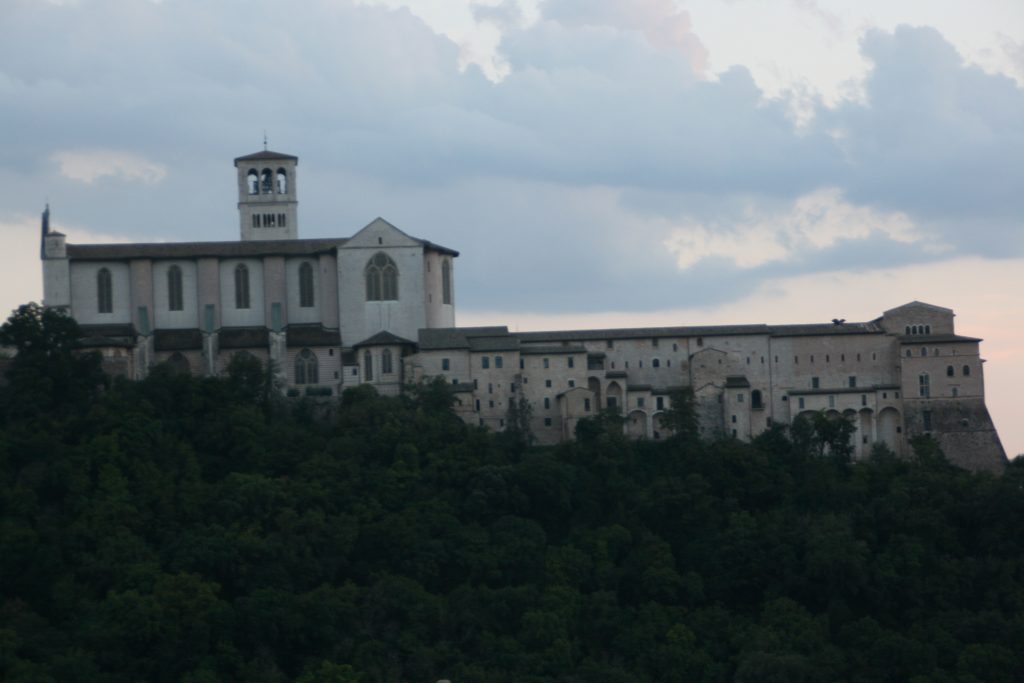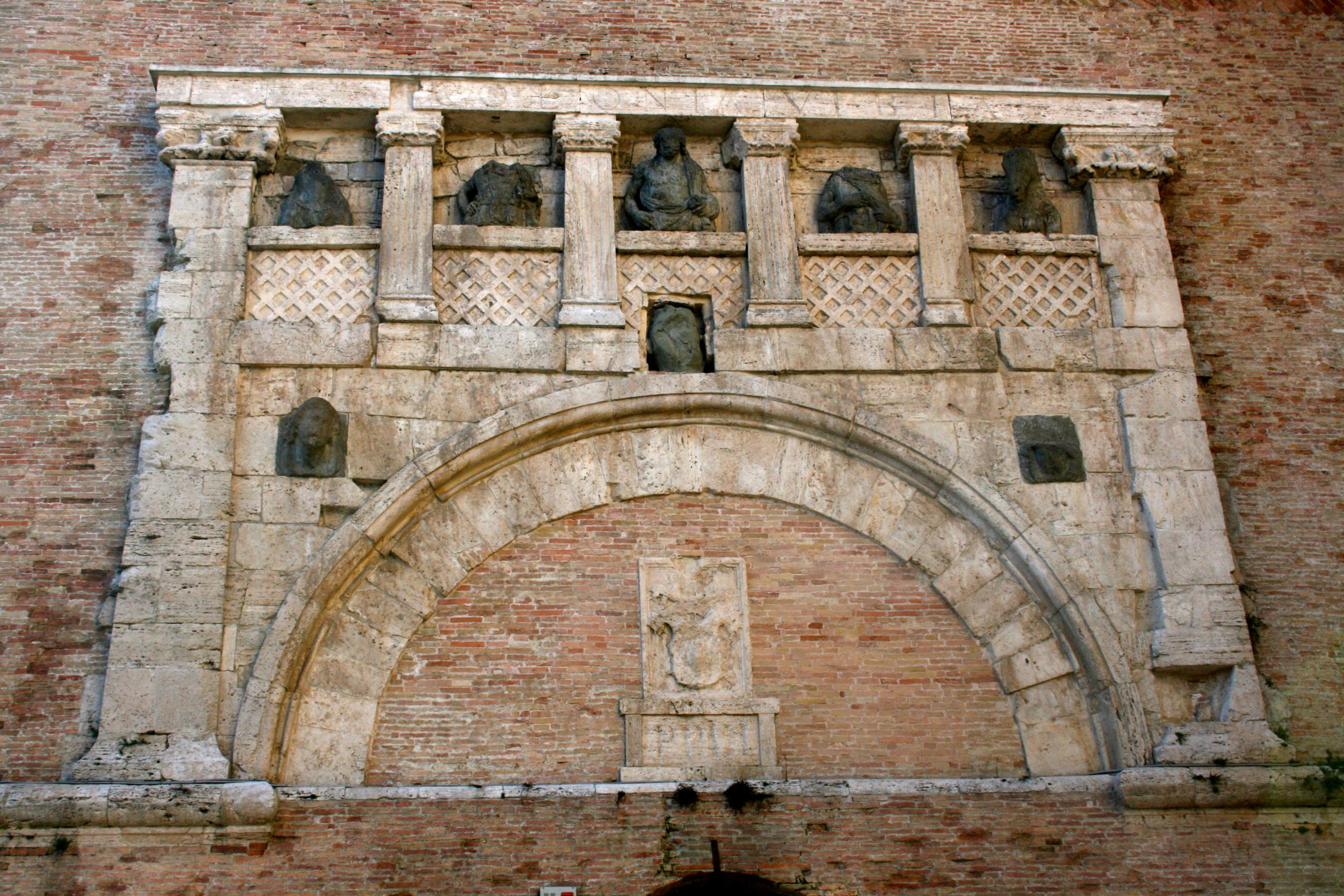Bevignate and the mistery of the Templar Code
Who was Bevignate, the mysterious hermit venerated like a saint by the population of Perugia, notwithstanding the Church had never approved his canonization?
An aura of mystery surrounds the figure of this medieval monk, whom The Templars dedicated a new church in Perugia. Inside the medieval building there are interesting frescoes, dating back to the seventies of the thirteen century, where Bevignate was represented wearing a white habit.
Some reserchers think he was a Templar monk lived in Perugia between the 12th and the 13th century, other believe he was a local saint lived in the early Christian age. Personally I think he was well known and venerated by the Templars not just in Perugia, but also beyond the boundaries of the Guelph Perugian Commune.
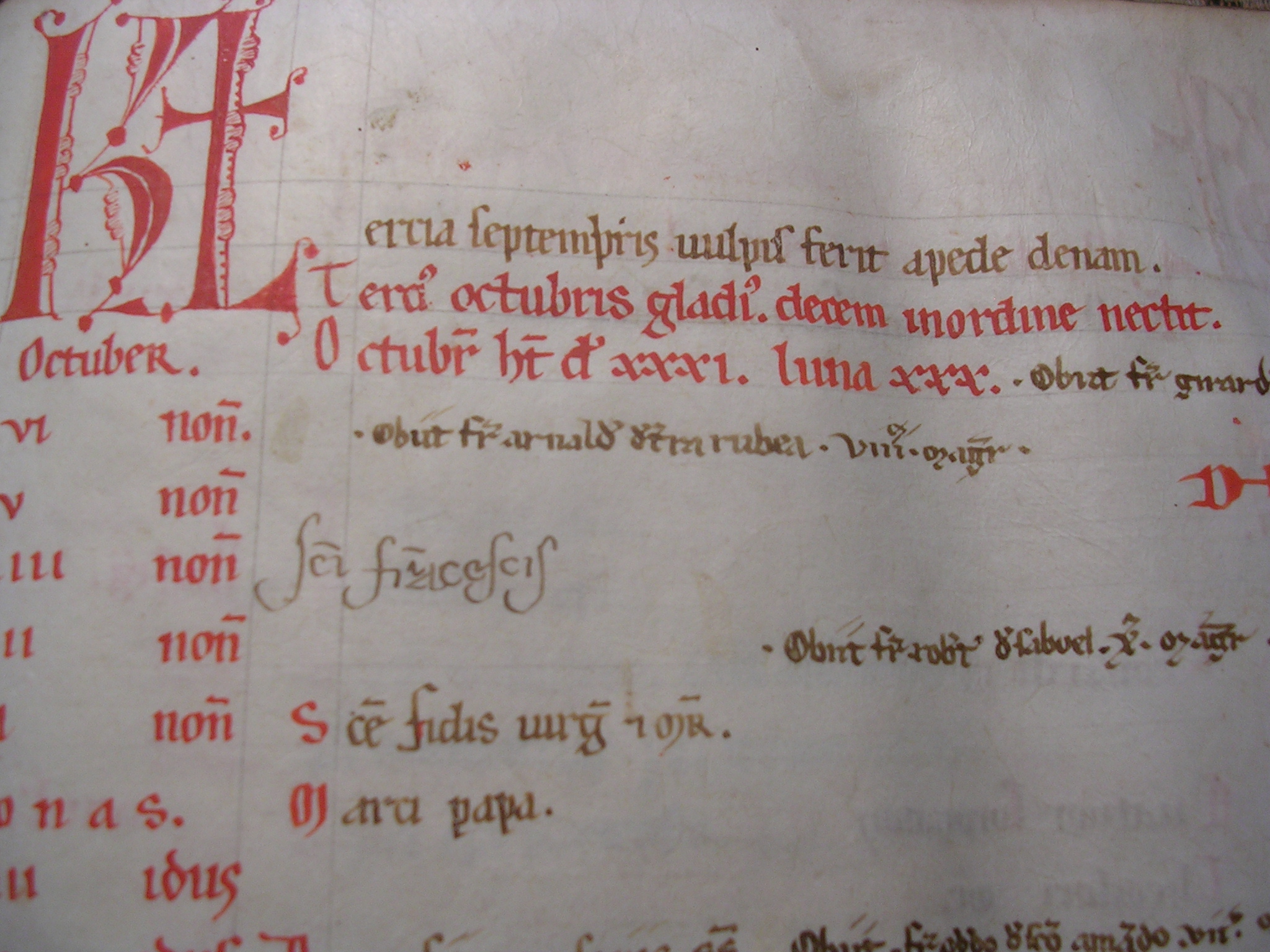
Some years ago, when I went to visit the archives of the cathedral of Modena, I could examine a document that testifies how some relics of the body of Bevignate were preserved and venerated also outside of Perugia, in some monasteries and Houses of Templars.
Thanks to father Guido Vigarani, I was able to browse and photograph the precious liturgical code preserved in Modena. According to some authors, the medieval code would come from a local scriptorium. Others believe it would come from Piacenza where was the House of S. Mary of the Temple, one of the most important Templar foundations of Italy.r
On the face of the manuscript is written the title: Missale Vetus ad Usum Templariorum, that can be translated from Latin as: Old Missal to be used by the Templars.
The manuscript consists of 221 sheets in parchment, introduced by an interesting liturgical calendar.
Browsing through the first seven pages of this old calendar introducing the missal, one can observe that some scribes of the Templar order have added, over the years, several notes written by hand.
Particularly exciting was to discover that in the liturgical calendar, at their respective funeral anniversaries of the saints, were added notes with the names of thirteen Great Masters of the mighty Templar Order. Even the name of the King of France, Philip II Augustus, and the name of Pietro di Monte Cucco (then rector of the Modena Templar House) were added by hand in correspondece with their date of death.
The greatest surprise was to verify that at the 12nd of May , when the catholic liturgy honors the saints Nereus, Achilleus and Pancrazio, the calendar shows a note, written in Gothic cursive, indicating this date as the anniversary of death of Saint Bevignate!
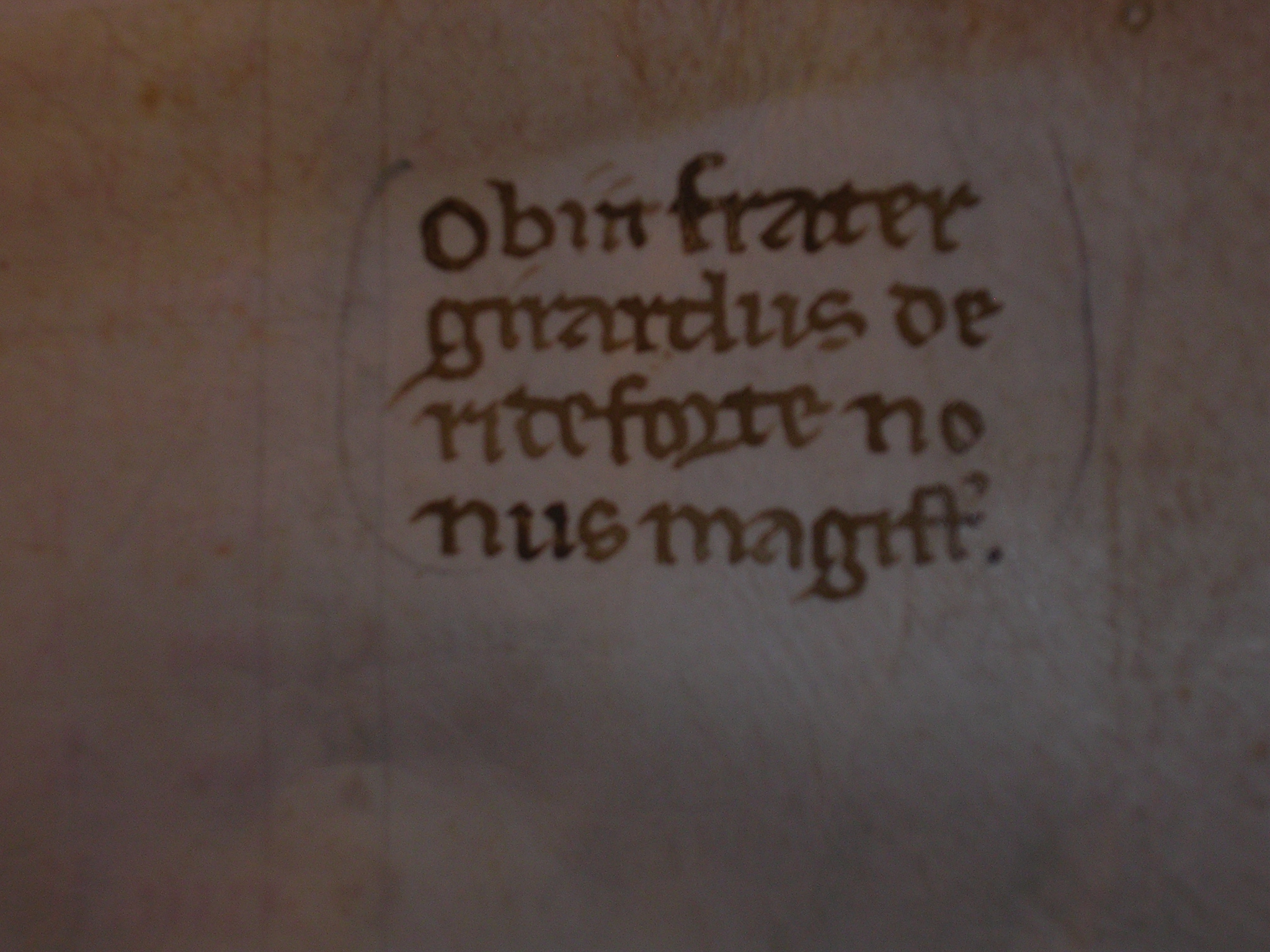
Who was the Templar monk who added the name of the mysterious saint of Perugia, venerated by the Templars but never canonized by the Church?
We know that ten different hands added the obituary notes in the Modena calendar. Orthographic analysis confirmed that was the same hand, that also noted on October the 4th the name of Saint Francis of Assisi, to add the name of Saint Bevignate. That gives us a useful information about the note concerning Bevignate, probably not added before 1228, the year of canonization of St. Francis.
It may have been a Templar monk from the Piacenza House (or perhaps from Modena?) to add the name of Bevignate in the manuscript.
What now is sure is that Bevignate was well known and venerated outside the Perugian territory, at least in the environment of the Knights Templar. This is demonstrated not only by the fact that his name was recorded alongside eminent personalities, like the Great Masters of the Templar Order and the King of France Philip II Augustus, but especially by the fact that inside the monastery from which came the manuscript, was also preserved a relic of the hermit Bevignate!
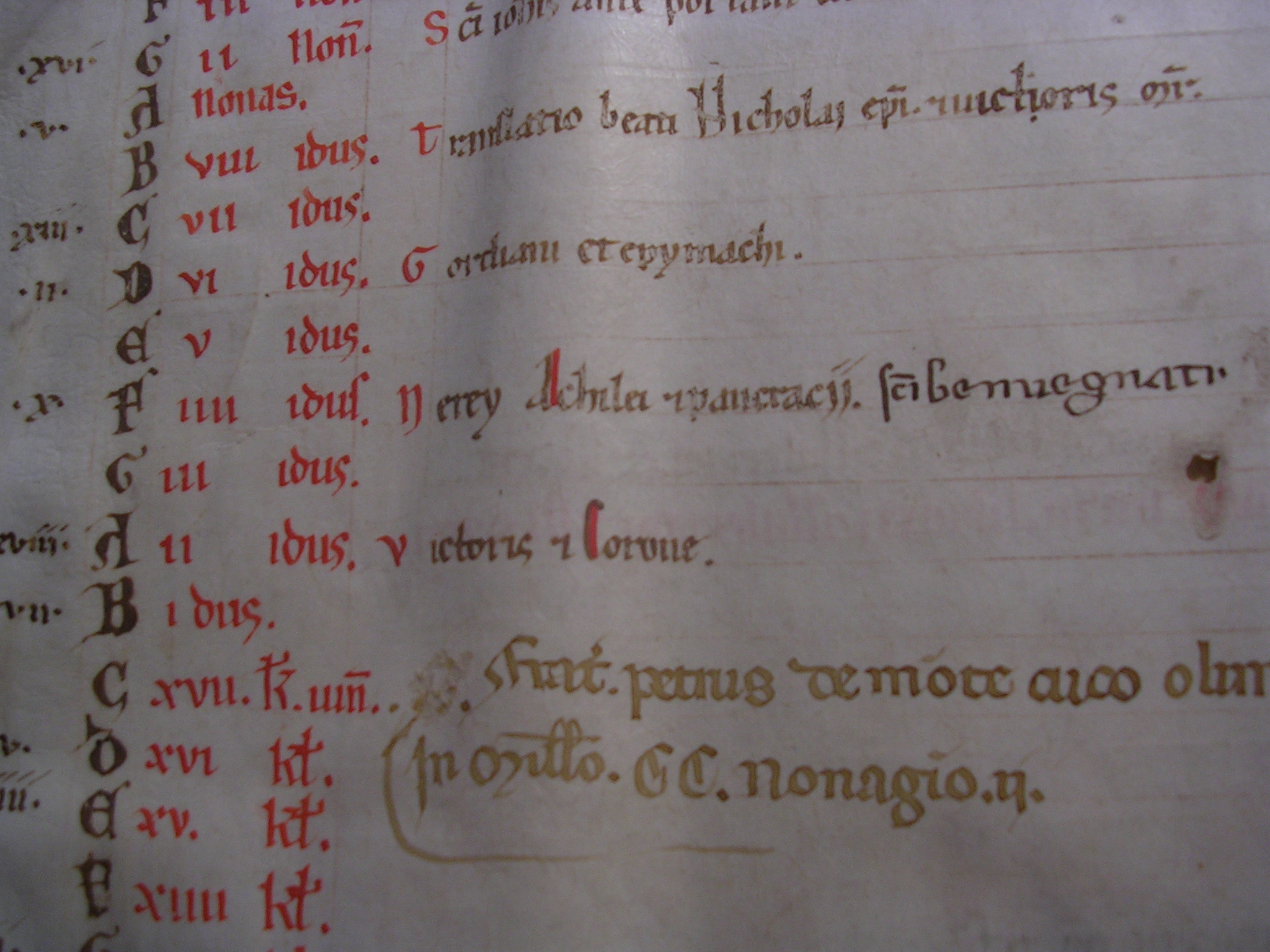
In fact, next to the name recorded on May 12, there are traces of an erased sentence, where previously was written: Hic est reliquie.
A relic of the body of Bevignate was thus preserved and venerated in a Templar monastery placed along the Francigena road!
It was probably one of the many relics venerated by the thousand of pilgrims who passed along this famous pilgrimage route.
Perhaps the holy relic was subsequently stolen, or simply moved to another monastery, causing the users of the missal to delete from the parchment the note concerning the relic.
Research on Saint Bevignate has just begun. My hope is that, thanks to Internet, there can be an exchange of useful information in order to find new historical documents about the figure of the Perugian hermit linked to the Knights Templar.



